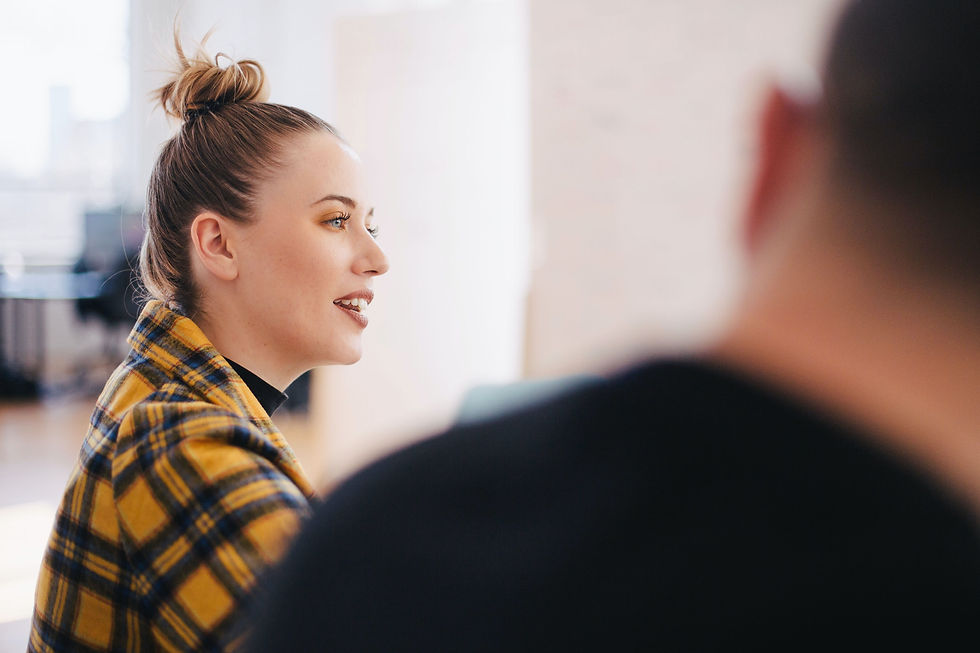THE WORKPLACE IS CHANGING: THE MOST RECENT IN MODERN OFFICE SPACE
- Munnazir Zarin
- Jun 29, 2022
- 4 min read
COVID as a sickness is something we will have to live with for the foreseeable future, and many of the modifications we've made as a society to deal with the epidemic are likely to be permanent, at least for the time being.
These include changes we've made to the workplace, lessons we've learned, and emerging trends. However, the virus is not solely to blame for all of the trends and developments in the modern workplace.
Among the various elements that account for many of today's trends in the modern office environment are:
The cost of commuting and global warming
Furniture sustainability, energy efficiency, and time efficiency
Recognizing the loss of distinctions between work and life, both before and after COVID.
Addressing the significance of self-actualization and individualism in the workplace.
Utilizing advancements in telecommunications and cloud-based workspaces.
And a lot more.
THE EXPANSION OF COWORKING
Coworking spaces have been around for decades, but their popularity skyrocketed in the age of online entrepreneurship and the digital nomad trend.
By 2015, it was evident that the coworking industry's expansion was no fluke, with startups, medium-sized firms, and Fortune 500 companies all using various coworking locations across the world to:
Reduce the cost of equipping a new workplace.
Avoid the costs and financial commitment of a long-term lease, especially for companies that are just getting off the ground.
Allow businesses to scale quickly while delivering the comforts and benefits of a high-end office space and a professional address at a fraction of the cost.
COVID initially hampered coworking spaces by encouraging people to work from home and avoid touch, much alone meet up in offices with a rotating door.
However, with the introduction of new hygiene concepts, enhanced sanitation procedures, greater ventilation, redesigned spaces, private rooms, and other crucial COVID-conscious practises, coworking spaces recovered and continued to develop as businesses tentatively returned to working in physical places.
A COMBINATION OF REMOTE AND OFFICE WORK
When it comes to working from home, remote employment is more likely to stick around than it was before 2019. There has always been a general concern among office managers and executives about allowing employees to work from home or anyplace, yet when remote work was forced on individuals under extremely risky circumstances, many organisations observed an increase in productivity.
Employee morale, workplace identity, social contact, and work-life balance were all sacrificed. However, rather than dismissing the concept entirely, many understand that if done effectively, it can be beneficial.
SOCIAL INTERACTIONS ARE FEWER
Casual social interaction was and still is a significant part of workplace culture. It is about far more than just team building and corporate events. It's the small moments, like watercooler chats, between-project chats, and pre-meeting chats, that actually reflect what it's like to work at a specific organisation.
Many of these interactions have vanished as a result of the shift to digital-only communication. There are watercooler Slacks and a few informal talks, but it's not the same.
While it is unlikely that things will return to normal overnight, some may argue that we will now witness fewer, but more important social interactions at work.
PRIVACY AND PERSONALIZED ENVIRONMENTS
It could be referred to as the return to the cubicle, but that's overly simplistic. Individuals at new workspaces have the option of working alone in a concentrated space, working alongside others in an open area, or brainstorming as a pair or team in a private conference room. Many coworking spaces are set up in this manner, providing people various alternatives based on the projects or tasks at hand. While certain settings may witness a return to customised offices and others to cubicles, space and privacy will become more crucial features.
This might include individualized charging connection access, bringing your own water, being served coffee rather than making your own from the machine, and other methods of reducing physical touch between people.
VISITING THE COMMON AREA AGAIN
Whether you call it the lounge, the common area, or the touchdown space, most corporate settings include some form of centralized location where employees can hang out together, customers may wait after their reception, and visitors can be welcomed at the start of an office tour.
These are areas designed to be pleasant and comfortable, to be soothing, and to allow a view into the inner workings of the business without being too distracting.
However, while we are in the grip of a pandemic, these spaces may continue to evolve in ways that improve safety and security without becoming too frigid and unwelcoming.
Even after COVID, we may see common areas change in terms of offering greater room for social separation and easier cleaning. seating arrangements, easily cleanable materials and furniture, and individual coffee tables per seating arrangement rather than fewer, larger tables, to discourage large groups from congregating in one area of the room.
RENT A CURRENT OFFICE SPACE
As things stand, COVID will be with us for the foreseeable future. As treatments improve and vaccines become more widely available, cases should continue to decline, and the virus will eventually fade into obscurity, as most epidemics do.
But it will surely have an impact for years to come, and its consequences will be felt by the rest of this generation. Some of the changes produced by COVID may take longer to manifest in the workspace.
We may not be working from ultra-sanitized isolation pods anytime soon (we hope), but COVID's impact on space and seating, sanitization, air quality, and a stronger emphasis on remote work and increased digitization will most certainly be with us for the foreseeable future.
CONTACT US RIGHT NOW!




Comments